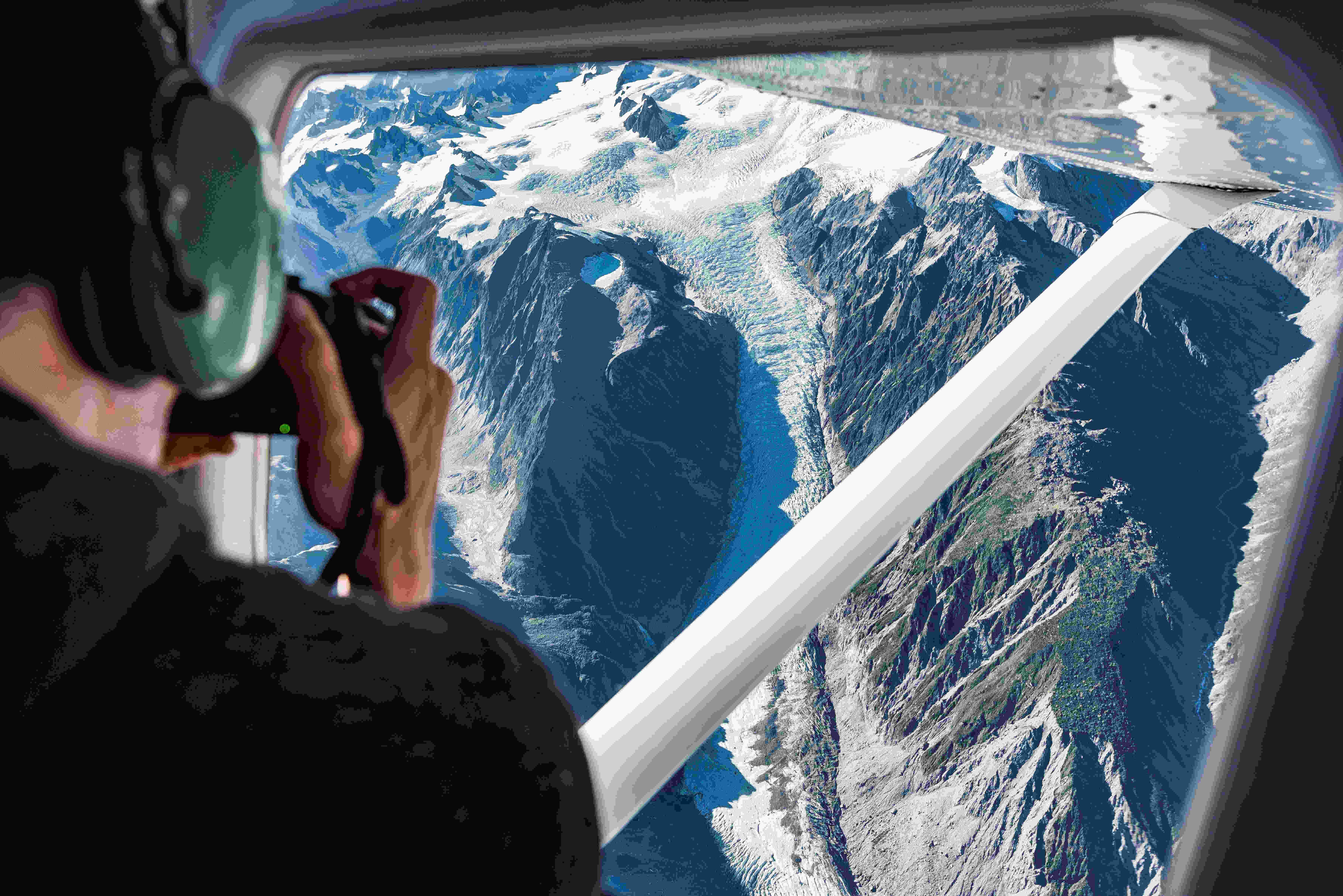 Earth & Space
Earth & Space
Extreme glacier melt and climate change
Extreme melt years are occurring more often than ever for glaciers around the world. We make it possible to measure the impact of climate change on this melt. We show that the extreme melt of New Zealand glaciers in 2018 was at least ten times more likely to have happened as a result of climate change.

Glaciers around the world are melting faster than in any previous decade since measurements began.
Glaciers form when snow accumulates over many years and compresses into ice. Glaciers accumulate snow in the winter, and then melt ice in the summer. Cold temperatures, more snow, or both, will cause glaciers to grow. Warm temperatures, less snow, or both, will cause glaciers to melt.
Beyond being popular tourist and alpine sports destinations, glaciers are important water sources. As they melt, they contribute to sea level rise. Shrinking glaciers are often used as symbols of climate change, but glaciers are complex and attributing this melt to climate change is difficult.
There are over 2,000 glaciers in New Zealand, and they are monitored in two different ways. First is by photographs taken of 50 glaciers, which has been done annually since 1977. Second is direct measurements of mass change taken at two glaciers. Through both of these surveys, we know that New Zealand's glaciers had two years of extreme melt in the last four decades: 2011 and 2018. Both years had warmer than average air and sea surface temperatures. We wondered if it was possible to measure the impact of climate change on this extreme glacier melt.
Earlier research has measured how much climate change contributes to extreme climate events such as heatwaves or droughts. These studies used global climate models for two different scenarios. First is the modern climate. Second is climate with greenhouse gases kept at preindustrial levels. The study would calculate how often an extreme event, like a heatwave, occurs in scenario 1 (today's climate) compared with scenario 2 (climate without human influence). The researchers could then determine whether climate change caused or affected the heatwave.
We used the same method to calculate the impact of climate change on extreme glacier melt, but added an extra step of modelling glacier change. We used the model to calculate how much mass glaciers might gain or lose in different years in today's climate versus a climate without humans.
We used this new method to calculate the impact of climate change on extreme glacier melt in New Zealand. In 2011, extreme melt was at least six times more likely due to climate change. In 2018, extreme melt was at least ten times more likely due to climate change. The extreme melt is more likely to occur with climate change because of warmer temperatures. Temperatures are 1°C warmer in today's climate compared with climate without human influence.
This is the first study to attribute annual glacier melt to climate change. It is only the second study to directly link glacier melt to climate change at all. With two studies in agreement, we can be more confident that there is a link between human activity and glacier melt. This confidence is important for international reports that use studies like ours to inform policymakers.
Global temperatures will probably rise another 0.5°C in the next few decades. As temperatures rise with climate change, glacier melt will likely occur more often and become even more extreme. This will contribute to sea level rise, and decrease water availability in regions that already struggle for water. Glaciers will become harder and more dangerous to access, both for tourists and for outdoor recreation.
The next step in our work is to calculate the impact of climate change on extreme melt for other glaciers around the world. We hope that this work will influence climate policy decisions and lead to stronger action on climate change.
Original Article:
Vargo LJ, Anderson BM, Dadić R, et al. Anthropogenic warming forces extreme annual glacier mass loss. Nat Clim Chang. 2020;10(9):856-861.
Edited by:
Dr. Beata Kusmider , Managing Editor
We thought you might like
Ocean acidification and its effects on coral reef growth
Jul 8, 2016 in Earth & Space | 3.5 min read by Rebecca AlbrightResetting nature’s clock: shifting seasons and species relationships
Sep 14, 2016 in Earth & Space | 3.5 min read by Stephen Thackeray , Sarah BurtheThe silent battle of young corals against ocean acidification
Oct 19, 2016 in Earth & Space | 4 min read by Taryn FosterFor polar bears the cost of living is rising
Mar 13, 2018 in Earth & Space | 4 min read by George DurnerMore from Earth & Space
Discovery of the first radiation belt beyond the Solar System
Jan 27, 2025 in Earth & Space | 3.5 min read by Juan Bautista Climent OliverOne million (paper) satellites
Jan 24, 2025 in Earth & Space | 3 min read by Ewan Wright , Andrew FalleVolcanic Ash: A Nutrient Boost for Reef-Building Corals
Sep 18, 2024 in Earth & Space | 4 min read by Frank Förster , Tom SheldrakeAmmonia Energy: A Call for Environmental Awareness
Aug 29, 2024 in Earth & Space | 3.5 min read by Matteo Bertagni , Robert Socolow , Amilcare PorporatoLikely increase in coral thermal tolerance at a Pacific archipelago
Dec 29, 2023 in Earth & Space | 3 min read by Liam LachsEditor's picks
Trending now
Popular topics


